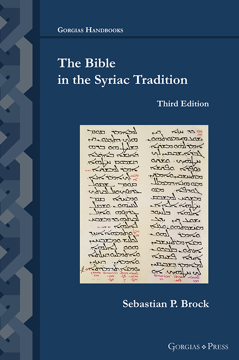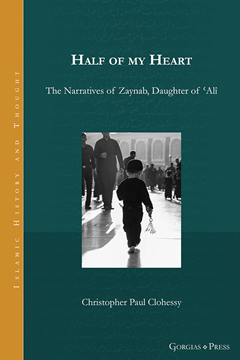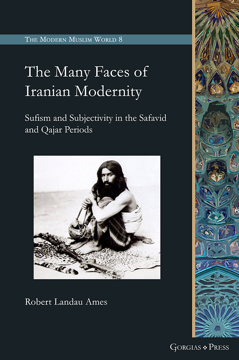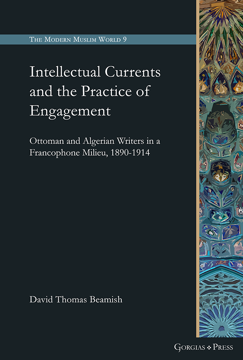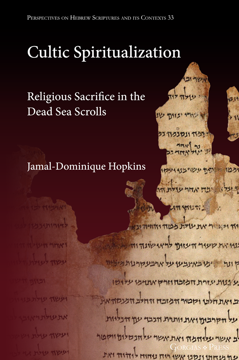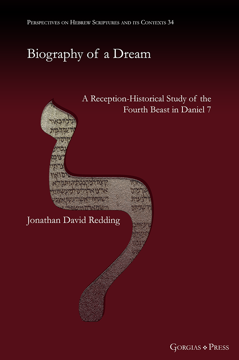The Bible in the Syriac Tradition (Third Edition)
Series: Gorgias Handbooks 52
ISBN: 978-1-4632-4233-6
This is a basic introduction to the various Syriac translations of the Bible and the ways in which they were used in the Syriac tradition. After an initial discussion of the general problems of biblical translation, the different surviving Syriac translations are outlined, as well as biblical manuscripts, lectionaires, printed editions, and translations. A reception history of the Syriac Bible covers the ways in which it has been interpreted, the commentary tradition, its use in preaching, in liturgy, and in spirituality. An appendix offers some comparative samples (in translation) to illustrate some of the differences between the different Syriac translations.
$53.00 (USD)
Half of my Heart (paperback)
The Narratives of Zaynab, Daughter of ʿAlî
Series: Islamic History and Thought 13
ISBN: 978-1-4632-4236-7
As Abû ʿAbd Allâh al-Ḥusayn, son of ʿAlî and Fâṭima and grandson of Muḥammad, moved inexorably towards death on the field of Karbalâʾ, his sister Zaynab was drawn ever closer to the centre of the family of Muḥammad, the ‘people of the house’ (ahl al-bayt). There she would remain for a few historic days, challenging the wickedness of the Islamic leadership, defending the actions of her brother, initiating the commemorative rituals, protecting and nurturing the new Imâm, al-Ḥusayn’s son ʿAlî b. al-Ḥusayn b. ʿAlî b. Abî Ṭâlib, until he could take his rightful place. This is her story.
$58.00 (USD) $46.40 (USD)
The Many Faces of Iranian Modernity
Sufism and Subjectivity in the Safavid and Qajar Periods
By Robert Ames
Series: Gorgias's Modern Muslim World 8
ISBN: 978-1-4632-4237-4
This study into both reformism and mysticism demonstrates both that mystical rhetoric appeared regularly in supposedly anti-mystical modernist writing and that nineteenth- and twentieth-century Sufis actually addressed questions of intellectual and political reform in their writing, despite the common assertion that they were irrationally traditional and politically quietist.
$106.00 (USD)
Intellectual Currents and the Practice of Engagement
Ottoman and Algerian Writers in a Francophone Milieu, 1890-1914
Series: Gorgias's Modern Muslim World 9
ISBN: 978-1-4632-4239-8
The late nineteenth and early twentieth centuries saw a great increase in the use of the printed word and the press by non-European actors to express and disseminate ideas and to participate in the intellectual life of both their home societies and a wider international context. This book examines the French-language writings of Ottoman and Algerian writers between 1890 and 1914.
$106.00 (USD)
Cultic Spiritualization
Religious Sacrifice in the Dead Sea Scrolls
ISBN: 978-1-4632-4241-1
Throughout the history of research on the Dead Sea Scrolls, the investigation of religious sacrifice has been neglected. This book examines the views of sacrifice in the non-biblical sectarian Dead Sea Scrolls, through exploration of the historical and ideological development of the movement related to the scrolls (the DSS movement), particularly from the vantagepoint of the movement's later offshoot group known as the Qumran community
$110.95 (USD)
Biography of a Dream
A Reception-Historical Study of the Fourth Beast in Daniel 7
ISBN: 978-1-4632-4243-5
The biblical apocalyptic books of Daniel and Revelation are, for better or worse, polarizing. Interpreters have long read and searched these books for clues about how their worlds will “end,” which each new interpreter promising to have “unlocked” how Daniel and Revelation work together to uncover a divine plan for prophetic fulfillment. Redding uses the Vision of the Fourth Beast from Daniel 7 as a case study to consider how interpretations of texts take on lives of their own, eventually wedding interpretation with text and prompting the question: what even is a text? Is it what is on the page, something interpreters put there, or a combination of both? Starting with the literature of the Levant, this work traces the use of motifs, images, and themes through Daniel, Revelation, and into pre-Enlightenment Christian thinkers to consider hermeneutical trajectories that shaped (and continue to shape) how modern readers engage biblical apocalyptic literature.
$114.95 (USD)
